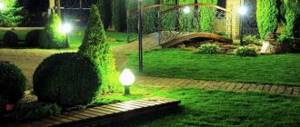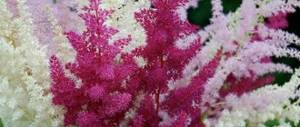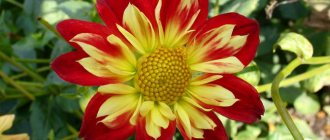Description
Plants with long flexible shoots that beautifully fall down are called hanging plants.
Interesting . Ampel, translated means “hanging flask (bottle)”.
Plants with drooping or creeping branches are planted in hanging baskets, floor vases, flowerpots attached to a wall or stand.
The shoots are left to grow freely, then they form a picturesque green waterfall or are allowed to curl along a support.
Ampelous indoor plants are divided into groups:
- blooming (fuchsia, hoya, aeschynanthus, duchenea);
- with decorative foliage (asparagus, ivy, plectranthus, tradescantia, budra, fittonia, nephrolespis);
- succulents (sedum, zygocactus).
By choosing the right types of climbing plants for your home flower garden, you can transform the room beyond recognition.
Common growing questions
Which climbing plant is the most unpretentious and capricious?
The most unpretentious vine flowers include ivy and philodendron, but ampelous begonia, on the contrary, is quite capricious and demanding in its care.
What pots and structures are suitable for climbing flowers?
For climbing flowers that hang down, it is better to use hanging pots. For vines that grow vertically, ordinary floor containers are suitable. Depending on the type of plant, it is necessary to use a pot or wall support. For some, a round stick or pipe wrapped in moss is suitable; for others, a mesh or lattice will be an excellent support.
Are indoor climbing flowers suitable for decorating the exterior facades of a house?
Indoor vines can be used to decorate the exterior of a home, provided they are given proper care. For planting outdoors, it is better to choose perennial herbaceous plants, since they tolerate changes in air temperature and gusts of wind much better.
Climbing plants are decorative flowers that can effectively decorate any room, adding zest and sophistication to it without much hassle on the part of the gardener.
Climbing plants are a hardy and unpretentious decorative crop that has long gained popularity among flower growers and interior designers. With the help of climbing plants, florists create “green” corners and phytowalls that add zest and coziness to any room.
Climbing indoor plants have many varieties, which you can get to know more closely by learning their names and botanical characteristics, as well as by looking at photos of flowers.
Kinds
The most numerous and unpretentious group of hanging indoor flowers are decorative foliage ones.
- Indoor ivy.
An evergreen, fast-growing plant with climbing shoots. Thanks to its aerial roots, ivy is able to cling to uneven walls and quickly fill large areas with green mass.
Ivy blooms very rarely in indoor culture. But there are more than 400 varieties of plants with different leaf shapes and colors. The variegated varieties are especially attractive.
The plant is unpretentious in cultivation and tolerates lack of light well.
Indoor ivy
- Nephrolespis.
A fern that forms a spreading bush with leaves (fronds) reaching 150 cm in length. Graceful carved shoots descend beautifully, forming a soft green waterfall.
Nephrolespis is considered the most unpretentious of the genus of ferns. The flower is placed away from direct sunlight and high humidity is provided.
Nephrolepsis
- Asparagus.
Asparagus or asparagus is a perennial with beautiful openwork leaves and long flexible shoots. At home, it sometimes blooms with small white flowers; after flowering, it produces bright scarlet berries.
Flowering types of climbing houseplants are characterized by the formation of large, bright flowers on the shoots.
Asparagus
- Ampelous fuchsia.
A perennial from the fireweed family, it has given rise to many varieties and hybrids for indoor floriculture. Thin fuchsia stems cascade down in a lush cascade, reaching half a meter in length. At the tips of the peduncles, flowers of an unusual shape open - long stamens extend far from the lush skirt of the petals, which bloom on a corolla - a tube. The color of fuchsia flowers has a rich palette; they are white, scarlet, pink, purple, yellow. Fuchsia blooms last up to 6 – 7 months, with careful care.
The plant is very unpretentious. Does not require bright lighting or special conditions of humidity and temperature.
- Hoya beautiful (wax ivy).
The evergreen vine, native to the rainforest, is popular with gardeners around the world. The plant has densely leafy shoots up to half a meter long. Hoya leaves are fleshy, elongated, up to 3 cm in size. Small flowers - stars are collected in spherical or umbrella-shaped inflorescences, 7 - 10 pieces each. The petals of the flower are white and the center is bright crimson.
The flower is well suited for growing indoors. It is given a place on the eastern windowsill, watered moderately and the crown is regularly sprayed with warm water. Hoya will respond to monthly feeding with a flower fertilizer complex with abundant and lush flowering.
Hoya
One of the most popular hanging succulents among flower growers is Morgan's sedum. Its hanging shoots resemble spruce paws with thick spines or miniature bunches of bananas. Similar to Morgan's sedum, Burrito sedum has a shoot covered in fleshy leaves that resemble a bunch of ladyfingers grapes.
Sedum is demanding on lighting and sensitive to excess moisture. In winter, it is necessary to install additional lighting for the sedum or carefully turn the flower pot towards the sun in different directions.
Important ! The shoots of the plant are quite fragile, the leaves break off easily. Sedum must be handled with care.
Popular hanging plants
Ivy or Hedera
One of the most popular climbing plants for the home, there are numerous varieties with carved leaves, green or variegated colors. The expanding branches are woody and very strong. The leaves have special suckers, which allow ivy to cover any vertical surface. It tolerates shade and dry air well, but needs regular watering and spraying. Today, breeders have developed a large number of species of this plant that can decorate any home. Particularly interesting are dwarf varieties of ivy with small star-shaped leaves.
Hoya or wax ivy
A climbing, flowering vine with dense leathery leaves and powerful branched shoots. The fragrant flowers of this unusual, but very decorative plant, are collected in racemes and look like wax. The color range of inflorescences is cream, yellow, greenish. Hoya fleshy is considered the most unpretentious. It grows slowly. Propagated by leaf cuttings. It grows well in 3-5 years, delighting with abundant flowering every year. The leaves of the plant need to be wiped from dust or the hoya should be given a shower. Grows well in partial shade. Watering in summer is abundant, in winter – moderate.
Philodendron climbing
An easy-to-care plant. Grows well in partial shade and even under artificial light. The leaves may be elongated or similar to the heart-shaped leaves of scindapsus. The surface of the leaves is glossy or velvety, can be green or variegated. Needs frequent spraying. Watering in summer is abundant, and in winter – moderate. It needs a light substrate. The leaves can be either green or variegated (the latter need brighter lighting).
Stephanotis
It is often called Madagascar jasmine for its fragrant white flowers. The flower inflorescence is large and beautiful and collected in a small raceme. The plant blooms from late spring and all summer. This plant needs good lighting, so it is best to install it in the brightest and lightest room. In summer it is watered once every 2 days, in winter – once a week. Stephanotis also needs frequent spraying of its dense, leathery leaves. To create a beautiful arrangement, place it in a basket with a tall handle that it will wrap around.
Ragwort
A plant that can be found both in the field and among indoor flowers. Particularly interesting are its species, which are often confused with ivy. Due to the shape of its leaves, it is called “maple”. But only the brilliant ragwort has this appearance. The rest of its species are more like succulents. The beautiful lush crown of the growing ragwort will look beautiful both on the shelf and on the window. It propagates easily by cuttings. In summer it is watered frequently, in winter - moderately. To make the plant more lush, the tips of its branches need to be pinched. The support that the plant needs can be made in the form of a grid or ladder.
Scindapsus
An unpretentious and very beautiful vine with heart-shaped leaves that can be either green or variegated. It grows very quickly and is valued as an ornamental foliage plant. It also grows well in partial shade, but the distance between the leaves in this case increases. Easily propagated by cuttings. For better tillering, the top of the plant is pinched, and several shoots are planted in one flowerpot at once. The plant does not like bright sun. From spring to autumn you need to carry out mineral fertilizing of scindapsus. It is replanted only if the roots entwine the inside of the flowerpot.
Cissus (indoor grapes)
A very unpretentious and shade-tolerant plant. It clings to supports with the help of tendrils, like grapes. If conditions are favorable for it, it grows quickly and creates very beautiful “thickets” of glossy bright green leaves. In spring and summer, it needs abundant watering and frequent spraying. In winter, watering is moderate. This plant has many species. The most popular today are cissus rhombifolia, multi-colored and Antarctic, bicolor. When overwatered or, conversely, lack of moisture, the tips of its leaves become brown and dry.
Fatshedera
A very interesting hybrid, created by crossing two popular indoor flowers - common ivy and Japanese fatsia. This plant is an evergreen vine, the branches of which can reach up to 5 meters. The stems of the plant are half woody. The leaves are very large - three or five lobed. Their surface is glossy. They can be either green or variegated. Fatshedera blooms in autumn with white flowers collected in umbels, in place of which dark blue berries are formed. Grows well in both light and partial shade. Doesn't like drafts.
Syngonium
A plant with long shoots, which, in the absence of support, create dense cascades or spread along the surface. This tropical liana belongs to the araceae family. Used as an ornamental deciduous climbing plant. The color of the leaves can be either green or variegated, with spots, stripes and silvery splashes. In shape they can be spear-shaped, arrow-shaped, heart-shaped and three-lobed. It grows well in the shade and in the light, but it is better to shade it from the bright sun. In summer, watering is plentiful, in winter it is reduced.
Monstera
One of the largest vines, the even leaves of which become carved over time. The plant is very unpretentious, but needs a lot of space, so it is best suited for large halls and offices. The lighting in which it grows well is partial shade. Doesn't like bright sun. In spring and summer - abundant watering, and in autumn and winter - moderate. Requires frequent spraying. Propagated by cuttings and layering. In the summer, several feedings are carried out.
Breeding Features
A gardener choosing hanging indoor plants must remember that they will require more space than compact bush forms. The shoots of the flower should hang down freely, without interfering with anyone, or curl beautifully along a trellis, rope or decorative lattice.
If the plant is planted in a flowerpot or hanging basket, it is necessary to regularly turn it towards the light in different directions. This is the only way to achieve uniform growth and development of shoots.
Most hanging plants are inhabitants of tropical forests that require high air humidity (with the exception of succulents). In addition to spraying, a decorative fountain or waterfall near the flowers will humidify the air.
Houseplants
Due to the large volume of green mass of ampelous flowers, compared to the root system, they need to be watered and fed more often than bush forms, but in smaller doses.
Advice . To water and fertilize hanging plants, gardeners recommend purchasing a watering can with a narrow and long spout or a large syringe.
Curly or creeping shoots, sooner or later, grow old and dry out. The florist needs to trim old branches in a timely manner so that they do not spoil the appearance of the flower. Young mustaches, stepsons and branches need to be thinned out, avoiding thickening.
It is important to direct plants climbing along supports in time in the right directions. It is difficult to redistribute branches that have incorrectly clung to the support without damaging them.
Benefit
In addition to aesthetic pleasure, hanging indoor plants can play an important role in home design. With the help of ivy and other fast-growing vines, you can quickly decorate a wall, zone the space, creating a living, light partition.
Light openwork ferns and asparagus, freely descending from hanging pots, perfectly stretch out spaces. With their help, a room with low ceilings will seem more spacious.
Watch also the video on the topic:











